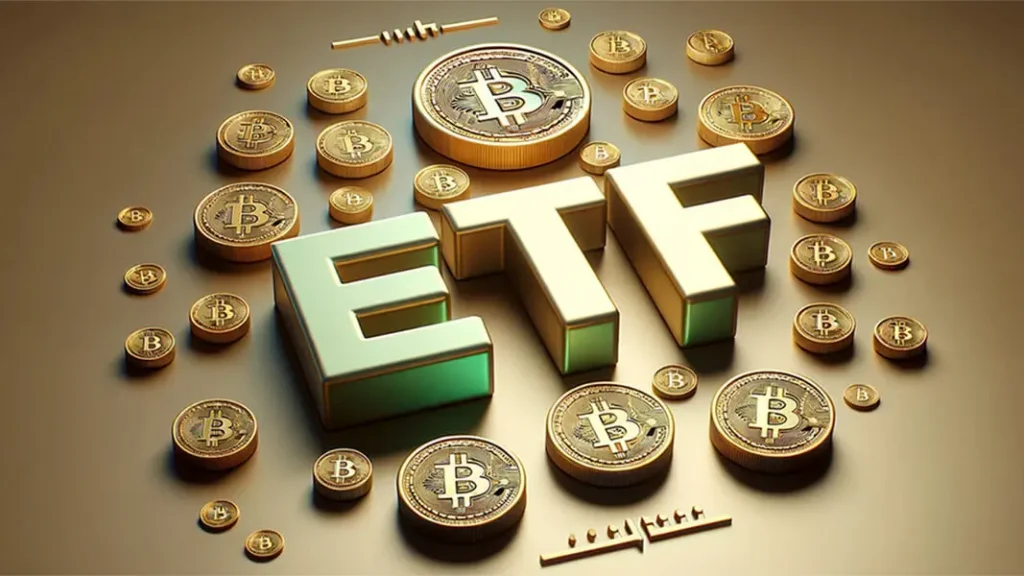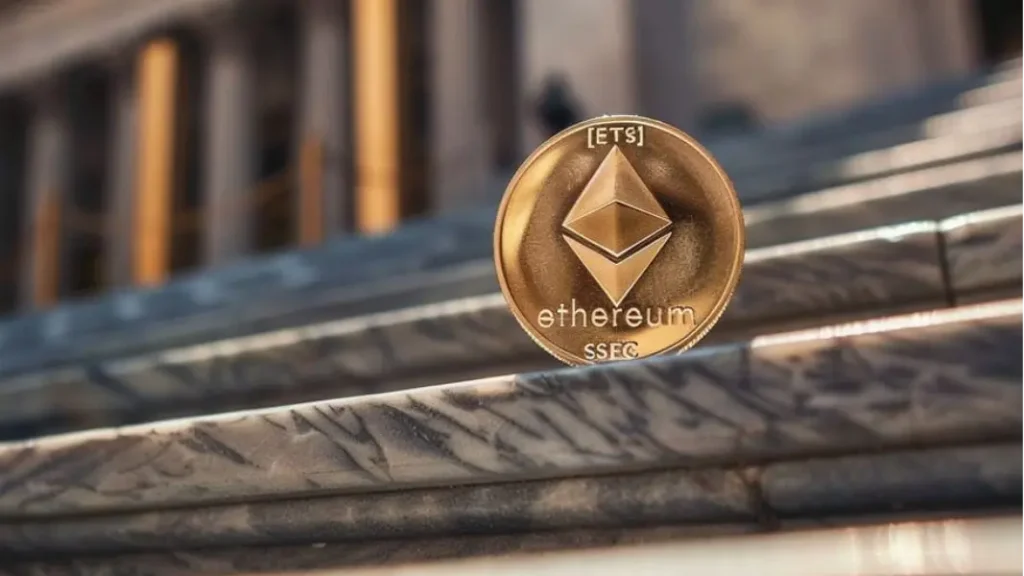- ETFs have grown to encompass a wide range of themes and assets, reflecting almost every aspect of global financial interests.
- Innovation itionn ETFs presents new challenges in terms of market stability and regulatory oversight, requiring a balanced approach to fostering innovation.
OUR TAKE
ETFs have grown from niche financial instruments to a dominant force in the investment world, with a market value of nearly $13 trillion. They’ve captured the interest of investors for their cost-effectiveness and ease of access, covering a spectrum from standard indices to niche sectors such as blockchain. However, as the variety of ETFs expands, concerns about market stability and the rise of speculative “FrankenETFs” demand attention. The future looks like it’ll bring new challenges and opportunities as private assets are integrated and regulations change. It’s important to keep a close eye on how ETFs work, weighing up the benefits they bring to the market against the complexities they create.
–Heidi Luo, BTW reporter
Introduction to ETF
When it comes to investing, the search for growth and stability drives many investors’ decisions. Known for their unique benefits and flexible investment strategies, Exchange Traded Funds (ETFs) have become increasingly popular with both seasoned investors and casual savers. It’s likely that you’ve come across inverse ETFs or bitcoin ETFs at some point, whether you know it or not.
ETFs cleverly bundle stocks, bonds or commodities to track the performance of indices or sectors, and provide an accessible entry point into the complexities of financial markets. This has made them particularly attractive to those who want to understand and participate in market trends without having to get involved in the complexities of individual stock or bond analysis.
However, as the range of ETFs expands to include everything from traditional assets such as gold and the S&P 500 to niche sectors, a question arises: Why has the ETF market expanded to include seemingly every conceivable theme?
There is almost an ETF for everything under the sun. From traditional assets like gold to niche interests like veganism, the ETF market now reflects the vast panorama of global interests.
Katie Greifeld, a Bloomberg analyst.
Historical context
ETFs emerged as a financial innovation following one of the most turbulent periods in stock market history. The idea for ETFs came about after the stock market crash of 1987, which was often called Black Monday because the markets fell so much in a single day.
This event prompted the Securities and Exchange Commission (SEC) to take a close look at the market and make some suggestions on how to improve stability. The idea behind ETFs was to create a market basket trading instrument that acted like a stock but represented a basket of stocks, in a way that mirrored the market.
“It was actually born out of a lawyer’s brain from the SEC, which is pretty interesting.” says Eric Balchunas, a senior ETF analyst.

This new idea was designed to make the market more efficient and give investors a new way to access broad market indices in one go. This was a pretty revolutionary move because it combined the trading flexibility of stocks with the diversified risk of mutual funds.
ETFs were first introduced to the market with the launch of the first “S&P Depository Receipts” or SPDR, which is now more commonly known as the “Spider”, in 1993. This was the start of ETFs becoming a mainstream financial tool.
The success of SPDR showed that ETFs could change how we invest by combining the best of stocks and mutual funds. The market quickly saw the benefits of ETFs, so there were lots of new types and assets under management in the following years.
Why ETFs? The appeal explained
ETFs offer a number of compelling advantages over traditional investment vehicles, which have fuelled their popularity. One of the best things about ETFs is that they’re more cost-effective than traditional mutual funds. ETFs usually have lower expense ratios because they are passively managed.
Instead of actively picking stocks, most ETFs aim to replicate the performance of a specific index. Eric Balchunas says, “Generally speaking, they’re cheaper. Right. So that’s big.”
Another big plus for ETFs is that they’re transparent. With ETFs, investors know exactly which assets are held because the composition reflects an index or specific rules. This transparency is updated daily, so you can see exactly where money is being invested.
What’s in the ETF every day is other mutual funds and hedge funds don’t have. you don’t know for either quarterly or even at all about the latter two. So the transparency is nice.
Eric Balchunas, a Senior ETF analyst
ETFs also have some tax advantages. Unlike mutual funds, which can end up paying capital gains tax through lots of trading to manage the portfolio, ETFs usually have fewer taxable events.
This is because the creation and redemption process of ETF shares involves large blocks of shares being swapped among institutional investors, which doesn’t trigger a taxable event.
The size of the ETF market is staggering and growing. Investors, both retail and institutional, are flocking to ETFs because they’re more efficient, transparent, and cost-effective ways to invest their money.
Katie Greifeld says, “ETF is big and growing. There’s about nine and a half trillion dollars in U. S. listed ETFs and about 12.8 trillion worldwide.”
“Like you have this computer and you have a mouse, you, whatever you want to invest in and all you do is click buy. And you got, and you own it. The amount of friction that has been eliminated in that is major. It’s almost like Amazon in that way. It’s there, you know, the fast, good, and cheap. It’s hard to get all three as a customer,” Balchunas says.
Pop quiz
What distinguishes ETFs from traditional mutual funds?
A) ETFs require active management.
B) ETFs have fixed annual returns.
C) ETFs offer daily portfolio transparency.
D) ETFs can only invest in equities.
The correct answer is at the bottom of the article.
Also read: Morgan Stanley to allow advisors to offer bitcoin ETFs to wealthy clients
The diversity of ETFs
The world of ETFs is vast and varied, covering every imaginable market segment and asset class. From broad market indices like the S&P 500 to sector-specific ETFs focusing on technology, healthcare, or energy, the range is extensive. Investors can also find ETFs tailored to specific investment styles, such as growth, value, or dividend investing. On top of equities, ETFs also cover bonds, commodities and real estate.
There are also more specialised areas, which are often called thematic ETFs, which target specific themes or trends. For example, there are ETFs that focus on new technologies like blockchain, renewable energy, and even specific investment strategies like ESG (Environmental, Social, and Governance) criteria.
The great thing about these thematic ETFs is that they offer targeted exposure to particular growth areas without the need for investors to pick individual stocks.
There’s an ETF for everything these days and this is what’s known as “ETFification,” where you can access almost any asset or theme through an ETF, from commodities like gold and palladium to cryptocurrencies like Bitcoin.

One notable development in this area is the emergence of spot bitcoin ETFs, which operate in a similar way to their commodity-based counterparts. These ETFs require the fund manager, such as BlackRock or Fidelity, to hold the actual asset they track, ensuring that the value of the ETF is directly correlated to the price of the underlying asset.
Katie Greifeld of Bloomberg explains this process by comparing it to spot gold ETFs, says, “That’s basically it. I found it helpful to compare it to spot gold ETFs because the spot gold ETFs do have to buy a bunch of gold. This method provides a straightforward and secure way for investors to gain exposure to Bitcoin without the complexities of direct ownership.
Also read: Dimensional launches new ETFs in Australia to tap demand
Concerns and cautions
While ETFs have a number of advantages, they also have a few potential drawbacks and areas of concern. One big criticism comes from Jack Bogle, who’s known as the father of the index fund. He’s worried that the rise of niche ETFs could lead to market distortions and risks for investors who don’t have the right information.
These niche or “FrankenETFs” are designed to fit very specific themes or trends, and they can be pretty volatile and speculative. Such ETFs could not only pose a risk to individual investors but could also impact market stability if they gain substantial traction.
Eric Balchunas has similar concerns about these specialised ETFs. He says, “It’s like nobody’s launching vanilla stuff anymore. They’re all trying to invent new things that will appeal to investors.”
This innovation is creative but can lead to complications and unpredictabilities that the average investor might not understand, potentially leading to unexpected losses.
Another issue is how ETFs affect market stability. The fact that ETFs are so easy to trade can make the market more volatile, as large quantities of shares can be bought and sold really quickly, sometimes making the market move more than it would otherwise.
This ease of access, while making investing more accessible, may also encourage risky behaviour that can make market swings worse, particularly during times of economic uncertainty.
The future of ETFs
The future looks bright for ETFs, with continued growth and innovation on the horizon. As financial technology develops, new types of ETFs could emerge that encompass a wider range of assets, including those currently considered too illiquid or complex for ETF structures. ETFs could even include private market assets or exotic derivatives, which would really change the way we manage investments and portfolios.
Eric Balchunas talks about the new ideas in the ETF sector, saying that the creativity we’re seeing now is just the start. “We have like this great loophole lets use it in new and creative ways.”
As ETFs develop, the regulatory framework may also evolve. The current regulations might need to be updated to better suit the changing nature of these investment vehicles, particularly as newer types of ETFs may carry risks not currently addressed by existing guidelines.
With more and more ETFs coming onto the market and moving the market so quickly, it’s likely that regulators will want to put more controls in place to make sure that investors and the financial system are protected.
“One of the interesting conversations that’s happening in the industry right now is whether you can put private assets in an ETF. The private market is really hot right now, especially with companies just not going public anymore.”says Katie Greifeld.
While ETFs continue to offer attractive investment opportunities, they come with complexities and challenges that require careful consideration. Both investors and regulators must remain watchful to navigate the developing ETF market and ensure that these tools deliver on their promise without unintended consequences.
Correct answer: C) ETFs provide daily portfolio transparency.
